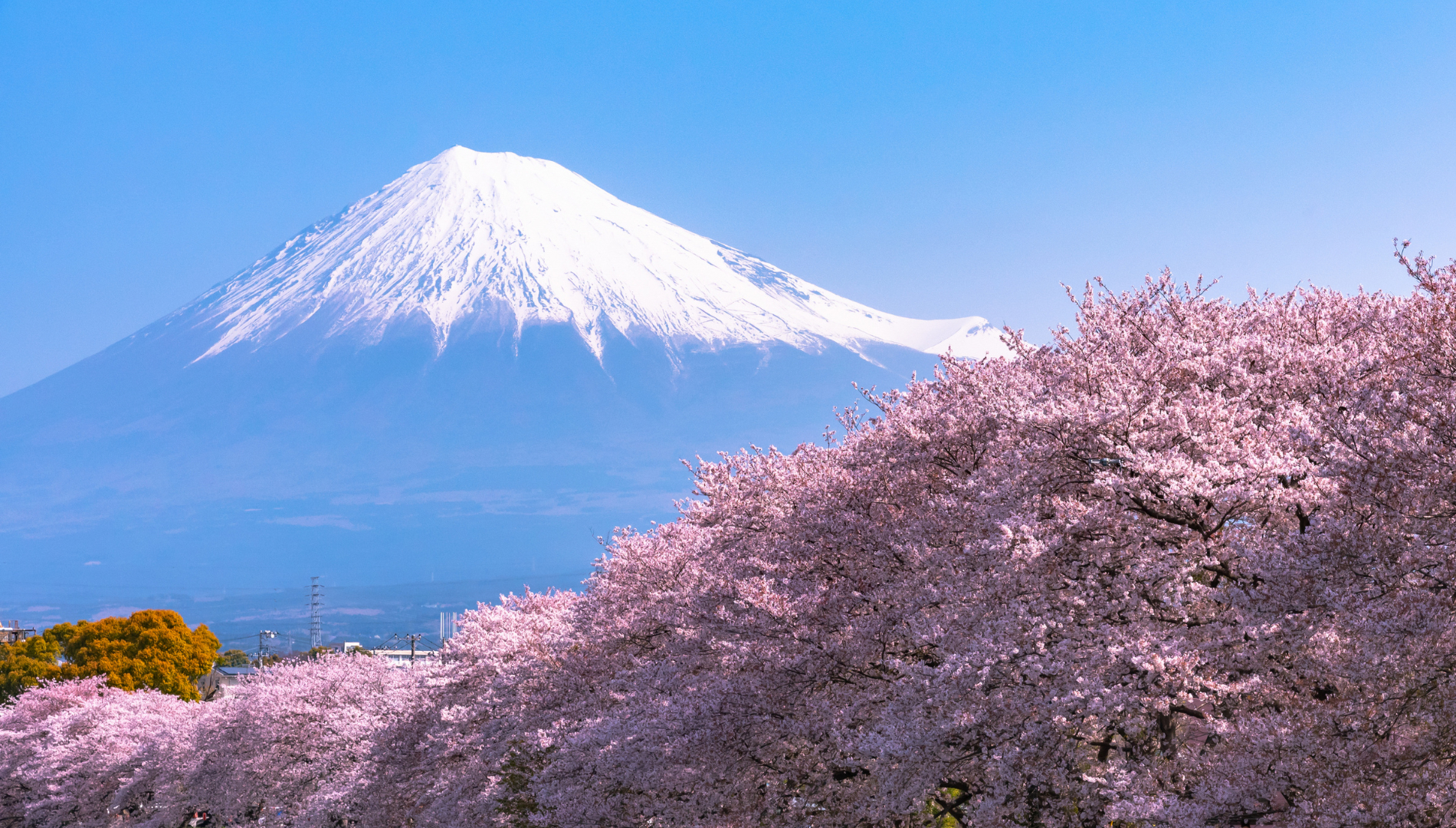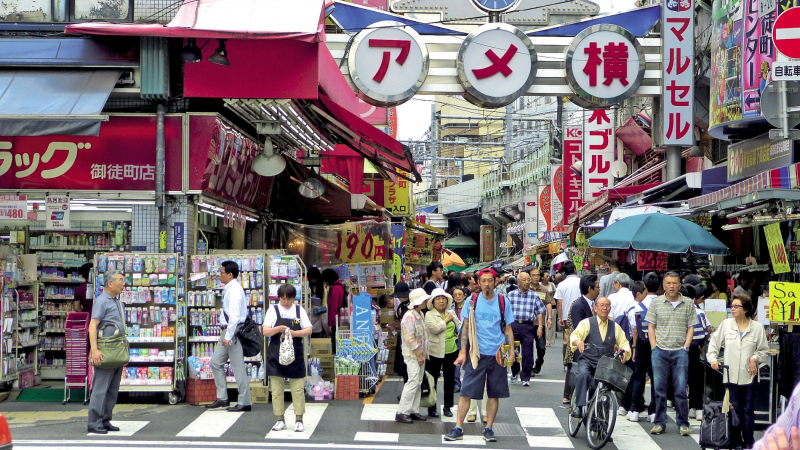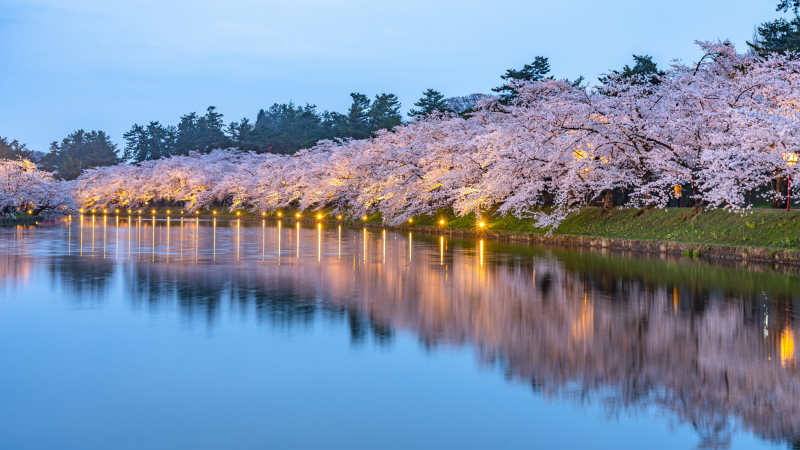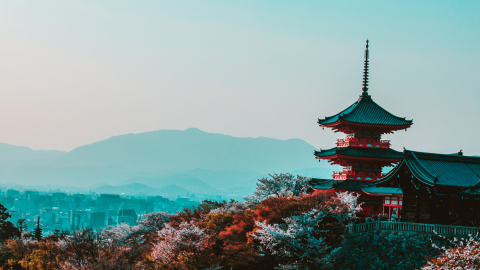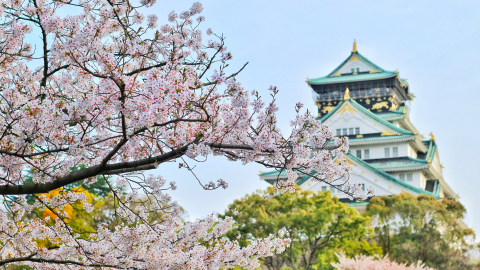Currently, in some areas of Japan, the first cherry blossoms have begun to bloom, signaling the beginning of one of the most anticipated festival seasons of the year. Cherry blossoms, also known as sakura, have long been a profound spiritual and cultural symbol of the land of the rising sun, symbolizing fragile beauty, purity and the flow of time.
According to statistics published by Japanese Botanical Research Institutes, there are currently more than 500 varieties of cherry blossoms in this country. This diversity not only shows the richness of Japanese flora, but also reflects the special interest of the people in this flower.

Cherry blossoms are a symbol closely associated with Japanese culture.
Of the more than 500 varieties of cherry blossoms, the earliest to bloom are those in the Okinawa region - Japan's southernmost region, which has the hottest and most humid climate in the country. Okinawa's warm climate has created favorable conditions for cherry blossoms to bloom earlier than in other regions.
In Okinawa, located in the southernmost part of Japan, known for its warm and humid tropical climate, the cherry blossom season has begun to bloom since the first days of January. The first flowers, with a pure pale pink color, have begun to bloom, signaling the approach of a brilliant spring. By the end of February, the entire Okinawa region will be covered with a carpet of brilliant cherry blossoms, creating a beautiful, captivating scene.
Moving north, the next destination that cherry blossoms visit is the coastal city of Atami, Shizuoka Prefecture, located in Central Japan. Atami is known as the locality with the earliest cherry blossoms on the main island of Honshu. According to historical records, the Atami cherry blossom variety was brought to this locality from India by an Italian in the 4th year of Meiji, i.e. 1871. This flower has the characteristic of blooming early, starting from mid-January and reaching full bloom in mid-February every year.

This year due to climate change in Japan, the blooming situation has changed a lot.
Also in Shizuoka Prefecture, another variety of cherry blossoms, called Kawazu, has also begun to bloom, opening a colorful cherry blossom festival season. The Kawazu Cherry Blossom Festival is one of the most anticipated spring events in Japan, attracting a large number of domestic and foreign tourists. Visitors coming here can not only admire the brilliant beauty of cherry blossoms, but also participate in traditional cultural activities, enjoy local cuisine and enjoy the fresh spring air.
The difference in blooming time between regions in Japan is due to climate differences. Okinawa, with its warm tropical climate, is where cherry blossoms bloom earliest. The further north you go, the colder the climate, so cherry blossoms bloom later.

Weather News Inc predicts that cherry blossoms in eastern and western Japan will bloom about a week after the first flower blooms, while those in the north will be about five days later.
However, in recent years, climate change has had a significant impact, changing the normally stable blooming pattern of cherry blossoms. The erratic changes in weather, with rising temperatures, extreme weather events such as storms, floods, and droughts, have had a significant impact on the growth and development of this flower species.
Accordingly, observing the blooming time of cherry blossoms is no longer simply a traditional cultural beauty of Japan, but has become an important factor in determining changes in the weather during the year. The fluctuation in the blooming time of cherry blossoms is considered an indicator of climate change, reflecting the increasing speed of global warming.
Concerns about the impact of climate change on cherry blossoms are not just a Japanese issue, but an international concern. Cherry blossoms are sensitive to changes in temperature, and shifts in their blooming times can be seen as a warning sign of larger changes taking place in the global ecosystem.

This year, the harsh cold snap has caused cherry blossoms to bloom slightly later than last year. However, with warmer temperatures forecast for March, the blooming period is likely to be similar to average across much of western and eastern Japan.
Monitoring and studying changes in cherry blossom blooming time not only helps us better understand the impact of climate change, but also helps us come up with timely response measures. Scientists are working hard to research and forecast cherry blossom blooming time, to help people and tourists plan their hanami festival in the best way.
Dr. Kuriyama Hiroshi, a Ph.D. in Agricultural Sciences, shared: “On the website of the Hydrometeorological Agency, there is a section on climate change monitoring, which includes information on cherry blossoms, and considers this a factor indicating global warming. Take the cherry blossoms in Kanazawa as an example. For 30 years, from 1990 to 2020, in Kanazawa, cherry blossoms always bloomed on March 7 every year. But from 2020, this time is from March 4, 4 days earlier. Experts believe that the reason is that the temperature on Earth has increased more than predicted, and call on everyone to think about ways to deal with climate change when viewing the flowers.”
According to the forecast of the Japan Meteorological Association, this year, cherry blossoms will continue to bloom earlier than usual, in Hokkaido on May 10, 7 days earlier than usual, Aomori on April 18, 5 days earlier, and Tokyo on March 22, 3 days earlier. This is a sign that the situation of global warming has not improved.





